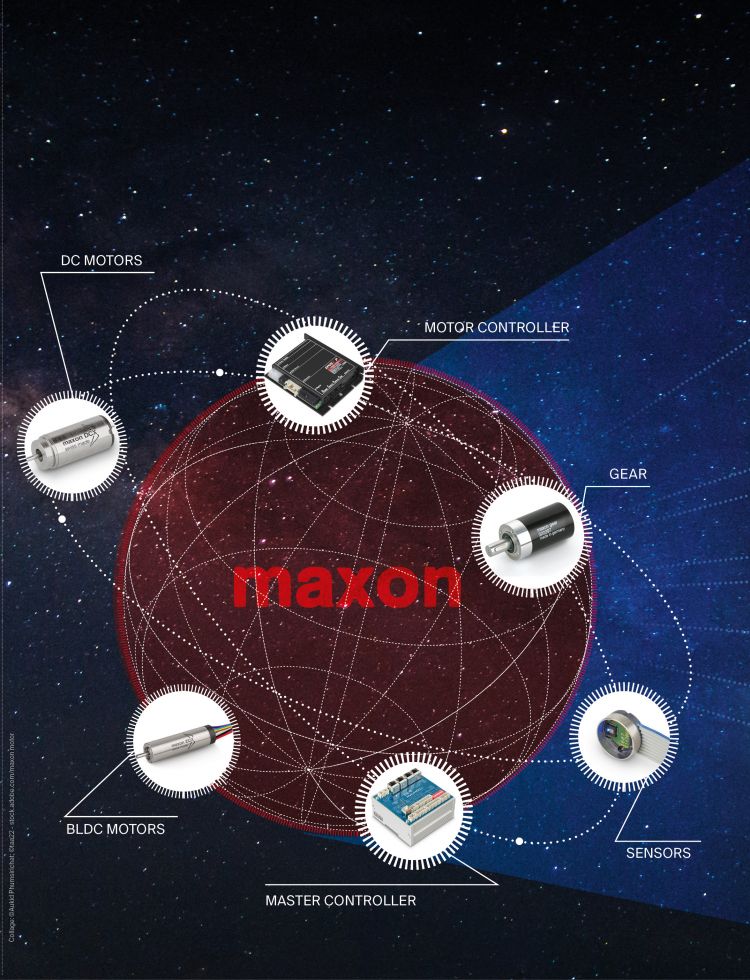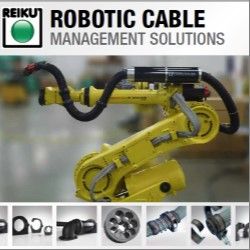There is much more to consider than just the design and the motor selection. Interdisciplinary thinking, specific engineering knowledge, depth of experience, and a clear understanding of the requirements are critical factors.
Drive Systems – Success Through Interdisciplinary Approaches
Juergen Wagenbach | maxon motors
Reposted with permission from the maxon motor's blog:
Drive technology is a basic building block for the performance of machines, robots, and hand-held devices. However, there is much more to consider than just the design and the motor selection. Interdisciplinary thinking, specific engineering knowledge, depth of experience, and a clear understanding of the requirements are critical factors.
Any kind of technological progress should focus on the application. At some point, improved performance characteristics or new technologies have to yield results in the form of better quality and/or reduced cost. With regard to drive technology for machines and hand-held devices, this means:
- Better dynamics improve the production output.
- Faster drive control improves precision and product quality.
- A more efficient drive system improves the energy efficiency of the overall system.
In order to achieve these goals, drive systems must be selected in the overall context of the application and its requirements.
The big picture
The first step in the specification and optimization of a drive system is to understand and correctly prioritize the technical and commercial requirements of the final system, which can be a machine, a robot, or a hand-held device. It's easy to miss the bigger picture and focus unilaterally on the considerations relevant for one's own field of expertise. As a rule, the drive selection happens in engineering. However, the performance, the cost, and the limitations of a drive solution are influenced by a multitude of factors as well as other system components. It is therefore critical to harness the know-how of experts from different fields during the idea and conceptualization phase.

Pools of expertise
A systems approach and interdisciplinarity are two key success factors that should be considered from the concept design all the way to the implementation in mass production. Frequently it is not possible to cover all competences in-house at the same high level. External partners with a wide scope of experience provide an opportunity for a broader, interdisciplinary exchange of ideas. Ideally, the partner is also able to take responsibility for the development and production of partial systems, to reduce development risks and speed up the time to market.
maxon = drive systems & engineering
With over 50 years of experience and more than 2800 employees worldwide, maxon's scope of knowledge extends far beyond the “pure” drive motor. With in-house development and production, the maxon portfolio covers brushless and brushed DC motors, gearheads, spindles, encoders, motor controllers, master controllers, and battery management systems. maxon components and customer-specific drive systems are used in robotics, medical and laboratory engineering, industrial automation, the automotive industry, and in aerospace applications from Earth to Mars. With many projects, the key factor isn't just the broad product portfolio but also the interdisciplinarity and depth of experience of the maxon application teams, as well as the possibility of developing completely new drive solutions. maxon experts for motors, gearheads, electronics, and control are available in the early stages of discussing an idea and are familiar with the requirements of specific fields of application. Why covering various fields of expertise can be so decisive for a drive system becomes clear when we take a look at the individual components and their influencing factors.

Top Down: Focus on the master
A top-level “intelligence”, known as the master, transmits motion commands to the motor controller and queries process information (e.g. torque, speed, position, status).
- How the tasks are shared between the master and the motor controller is critical for assessing the required performance and selection of the master, the motor controller, and the communication interface.
- If fast cyclic data exchange (e.g. every millisecond) is needed in the machines, then a master with a real-time operating system (e.g. PLC) and a fast interface (e.g. CAN, EtherCAT) is required.
- If complex motion sequences can be pre-configured and executed autonomously in the motor controller, then it is sufficient to use a PC (common in lab automation), or a microcontroller (as used in hand-held devices, e.g. screwdrivers and drills from industrial automation or medical technology).
Focus on the motor controller
The motor controller is the link between the top-level master and the motors as well as the feedback devices (e.g. encoders). Controllers and the power stage are used to convert current, speed, and position commands into voltages and currents in the motor phases.
- Fast controller cycles and complex algorithms enable precise and dynamic drive motions.
- State-of-the-art power stages deliver the peak currents required for fast acceleration. They have a high energy efficiency. Integrated motor and signal filters improve the electromagnetic compatibility (EMC) and noise immunity
Focus on the encoder
Speed and positioning control require feedback devices (so-called encoders or linear scales) for returning information about the actual position of the motor and/or output shaft.
- The resolution and location of these encoders determine the theoretical precision limits of the positioning.
Focus on the motor
The motor converts electrical energy into mechanical energy, e.g. into motion and torque.
- DC or BLDC motors with high overload capacity can have a compact design, because high torques are available for dynamic acceleration phases short-term.
- Motors with a low rotor inertia reduce the torque required to accelerate the rotor, thereby increasing energy efficiency and dynamics.
- High motor efficiency therefore improves the overall energy efficiency and reduces the heat generation, which is an important factor especially for hand-held devices.
Focus on the gearhead
The precision, backlash, elasticity and efficiency of the gearhead and the mechanical assemblies…
- … determine output positioning accuracy.
- … impact the dynamics, e.g. the time after which the target position has been reached and stabilized.
- … play a role for energy efficiency.
Challenge: Integration
In order to integrate all components into a unit that is as compact as possible, it is necessary to consider the thermal aspects of mutual heating under load. To avoid costly redesigns, operating point calculations and thermal evaluations for the electric motor and the electronics should be done early on during the proof-of-concept stage.
Challenge: Battery operation
Battery-powered applications require competence in energy efficiency optimization and battery management.

Example: Integrated door drive system
Billions of people ride in elevators every day. Besides the main drive, elevators require compact door drives that are installed in the tight space above the door. The “smart” drives receive commands to open and close via a bus system. The drives need to execute these commands reliably and fulfill strict safety requirements.
Together with a leading elevator manufacturer, maxon has developed the Door Drive, which is capable of moving doors weighing up to 400 kg. This low-noise and energy-efficient drive system integrates an high-torque maxon EC 90-flat motor with an encoder, an optional belt transmission, as well as an EPOS positioning controller in one compact unit. The data exchange is implemented via CAN. Specific control and force monitoring algorithms ensure smooth but dynamic door movement, precise positioning, and squeeze protection.
maxon designed and developed the system in collaboration with a customer, bringing together the interdisciplinary know-how of experts in application and safety technology, construction, controllers, electronics development, thermodynamics, and software. This kind of solution cannot be achieved simply by combining individual components: It requires the ability to design a new drive solution for a specific application case. maxon is the ideal partner for drive systems, controllers, and battery management.
The content & opinions in this article are the author’s and do not necessarily represent the views of RoboticsTomorrow

maxon group
maxon is a leading supplier of high-precision DC brush and brushless servo motors and drives. These motors range in size from 4 - 90 mm and are available up to 500 watts. We combine electric motors, gears and DC motor controls into high-precision, intelligent drive systems that can be custom-made to fit the specific needs of customer applications.
Other Articles
How Parvalux Is Helping to Develop the Next Generation of Conveyor Systems
Robots speeding up material handling
The rise of modular robots and the importance of drive train design
More about maxon group
Comments (0)
This post does not have any comments. Be the first to leave a comment below.
Featured Product

